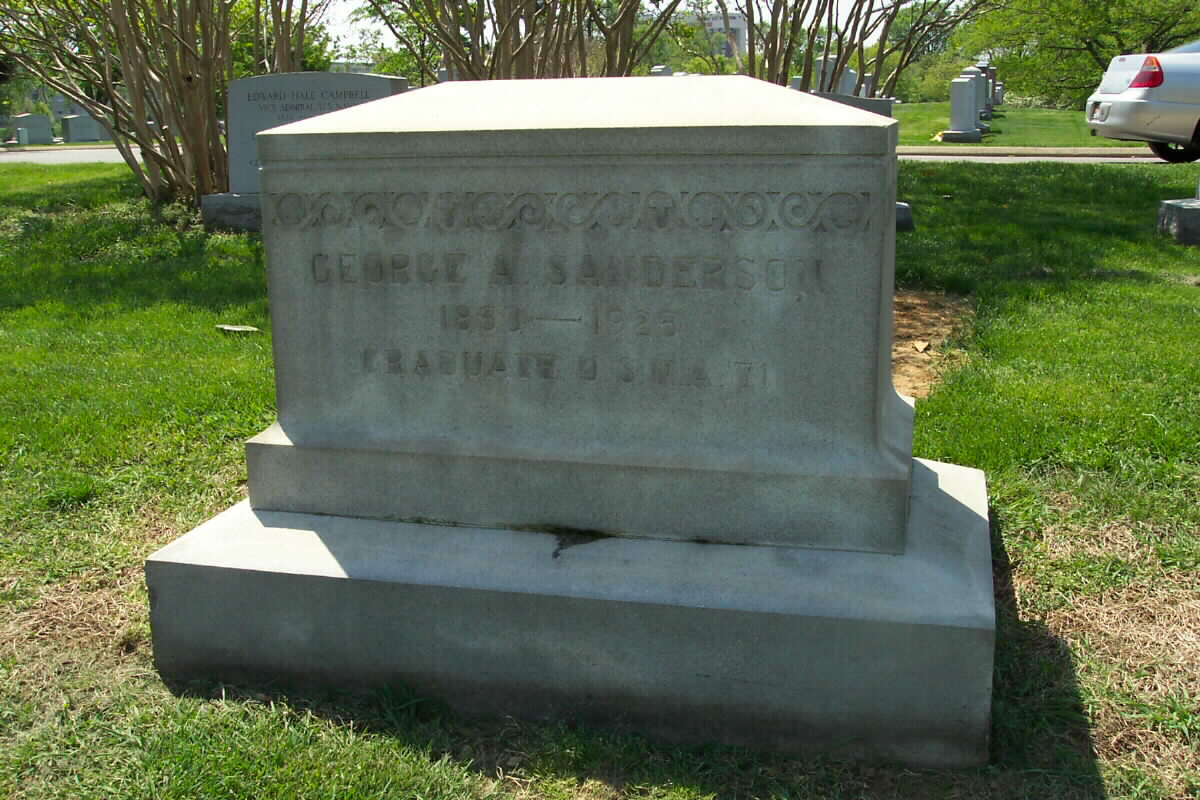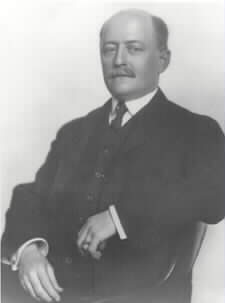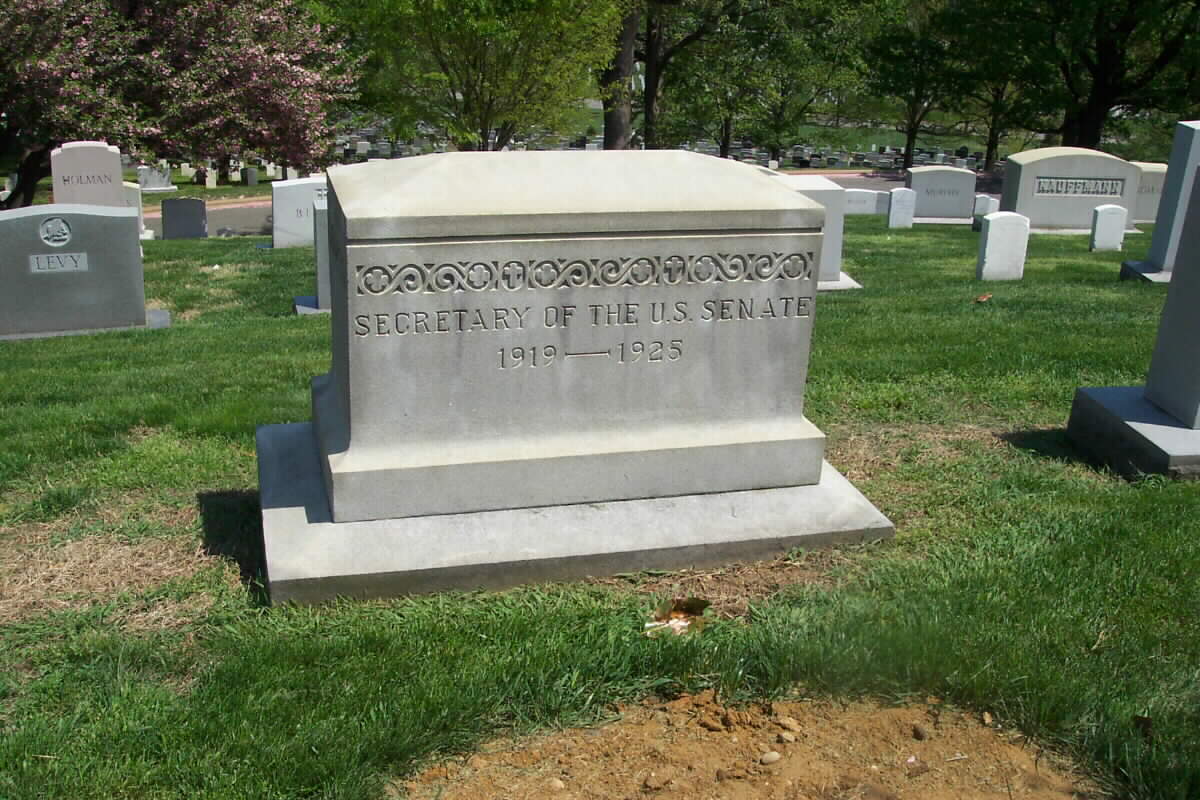George A. Sanderson, Secretary of the Senate, 1919-1925
Just before lunch on May 14, 1919, forty-four high-spirited Senate Republicans boisterously entered a Capitol conference room. Backslapping and handshaking, they made their way to seats prepared for this first party caucus of the soon-to-convene Sixty-sixth Congress. Their triumphal spirit stemmed from the November 1918 congressional elections, which placed their party back in control of the Senate — if only by a two-vote margin — for the first time in six years.
In common with millions of other Americans, these senators believed that the nation stood on the threshold of a new era. Within days of the 1918 elections, an armistice ending World War I had taken effect. And more recently, President Woodrow Wilson had sailed for France to negotiate a peace treaty. Word back from Paris indicated that the treaty, with its provision for a League of Nations, would be signed within weeks.
As the United States prepared to shift from wartime concerns to peacetime opportunities, members of the Senate Republican caucus — deeply divided between a small but vocal cadre of progressives and a larger group of conservatives ready to take over most of the key committee chairmanships — focused on party discipline and cooperation. As one cautiously optimistic conservative noted, the May 1919 caucus meeting displayed “harmony a foot thick.”
To smooth relations with their potentially volatile progressive colleagues, party conservatives readily agreed to the election of a progressive-endorsed candidate as Senate president pro tempore. They also supported consensus candidates for the offices of secretary of the Senate and sergeant at arms. For secretary of the Senate, the majority caucus nominated George Andrew Sanderson, a sixty-nine-year-old retired railroad builder and Chicago businessman.
At their May organizational meetings, Republicans elected the Senate’s most senior member — the tall, trim, silver-haired, sixty-eight-year-old Massachusetts Senator Henry Cabot Lodge — as caucus chairman. In that position, Lodge would also carry out floor responsibilities similar to those that today are assigned to the Senate majority leader. He then gained a third major responsibility — more important as things turned out than the first two — as chairman of the Senate Foreign Relations Committee. As soon as President Wilson presented the Versailles treaty to the Senate for its approval, Lodge would control all the essential levers of power.
From May 1919 through March 1920, Lodge and the treaty dominated the Senate’s agenda and — one can reasonably guess — the daily activities of Secretary Sanderson. The sulphurous tone that poisoned this transitional period is evident in a remark that Lodge made to a friend about the president of the United States: “I never expected to hate anyone in politics with the hatred I feel toward Wilson.”
In November 1919, after one of the bloodiest legislative battles in the Senate’s history — featuring a stroke-impaired president who stubbornly refused to bargain with the more moderate members of the opposition — Lodge engineered the treaty’s defeat. For good measure, when treaty supporters tried to revive the pact early in 1920, he arranged a second defeat.
Despite the unprecedented media coverage of Senate activities during this emotion-charged year, Secretary George Sanderson remained in the shadows. Today, beyond certain vital facts, we know very little about him. He was born in Hamilton, Ohio, on February 22, 1850. Twenty-one years later, in 1871, he graduated from the U. S. Naval Academy. For reasons that are now obscure, he resigned his naval commission after two years to enter the British merchant marine. He stayed with that service for just two years, but his responsibilities would later give him the curious distinction of being the only secretary of the Senate — so far as we know — to have once commanded an English steamship!
From his mid-twenties into his forties, Sanderson used the civil engineering skills he had acquired at the Naval Academy to become wealthy as a railroad builder. In 1892, he entered the railroad business at Chicago’s Union Stock Yards. After ten years — in another seemingly abrupt career move — he left Chicago for the warmer climate of northwestern Mexico. There, in 1904, he became president of the Sonora railroad construction company. For the next fifteen years, Sanderson participated in the profitable burst of commercial and agricultural development that swept the Sonoran region. In 1919, nearing retirement age, he wrapped up his business affairs and traveled to Washington to become secretary of the Senate.
There is a missing link in this story. Why did Sanderson decide to give up Mexico’s mountains for Washington’s Capitol Hill? We can only speculate that Illinois Senator Lawrence Sherman played some role in this final career change. At the May 1919 caucus meeting, it was Sherman who nominated his former Chicago constituent for the secretary’s post. Fairly close in age, both men had been born in Miami County, Ohio, and both were active in Illinois political circles at the beginning of the twentieth century. At the time he nominated Sanderson, Sherman served on the Senate committees on Appropriations, Commerce, and Transportation Routes to the Seaboard. Each of these panels handled issues related to Sanderson’s career in railroad construction.
We know little about Sanderson’s day-to-day activities and can only assume that he was a quietly effective secretary. On April 24, 1925, when he died unexpectedly of a heart attack at the age of seventy-five, Washington and New York newspapers belatedly took notice of him. He was buried at Arlington National Cemetery.
While Sanderson’s personal and professional lives remain obscure, his five years of Senate service coincided with a period of intense activity and dramatic events on the Senate side of Capitol Hill. In addition to the two gallery-packing votes on the Treaty of Versailles, Sanderson witnessed:
• Senate passage of the Woman Suffrage Amendment to the Constitution (1919)
• President Wilson’s personal delivery of the Versailles treaty to the Senate chamber and his impassioned plea for its approval (1919)
• the first successful use of the cloture rule to limit Senate debate (1919)
• establishment of a pension program for Senate employees (1920)
• elimination of forty-two obsolete Senate committees (1920)
• a federal court conviction of Senator Truman Newberry for excess spending in his 1918 campaign against auto magnate Henry Ford (1920)
• the first election to the presidency of an incumbent senator (Warren Harding, 1920)
• the swearing-in of the first woman senator (Rebecca Felton, 1922)
• Senate investigation of the Teapot Dome oil leasing scandal (1923-24)
• Republican caucus denial of committee chairmanships to several progressive Republicans (1924)
• the Senate’s order that the architect of the Capitol consult with reputable architects to “improve the living conditions of the Senate Chamber” (1924)
• the trauma associated with two senatorial suicides (1924, 1925)
• rejection of the first cabinet nomination in sixty years (1925)
If only Sanderson had left a diary!

Michael Robert Patterson was born in Arlington and is the son of a former officer of the US Army. So it was no wonder that sooner or later his interests drew him to American history and especially to American military history. Many of his articles can be found on renowned portals like the New York Times, Washingtonpost or Wikipedia.
Reviewed by: Michael Howard


